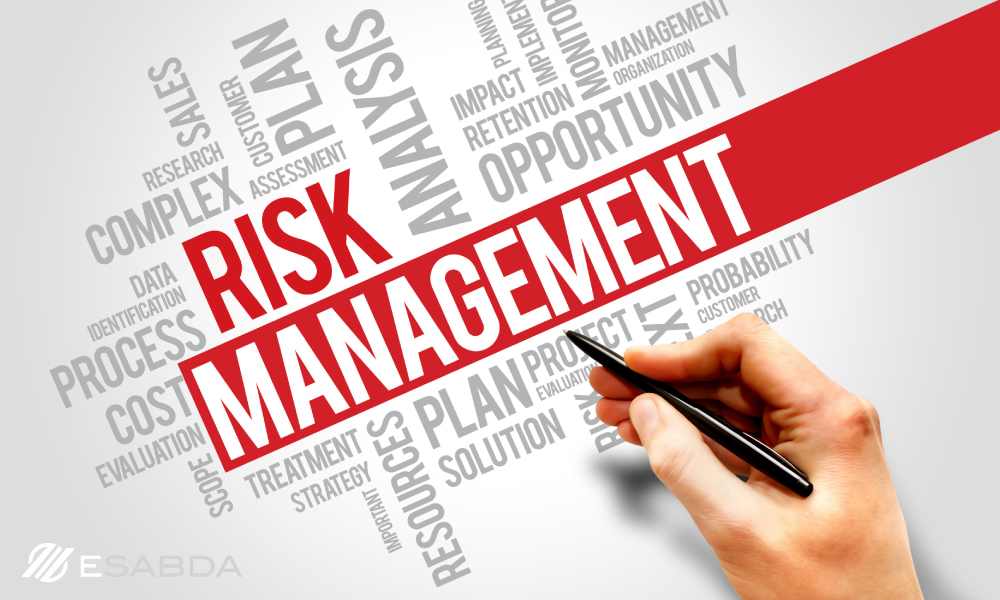By Esabda
With the starting of a small business risks always come along with it. Good risk management is necessary for every small business. Every type of business has to face the risks like financial risk, operational risk, reputational risk, strategic risk, and many more. While big businesses have huge investments in their backup, small businesses find struggle to manage those risks. Good risk management will improve your small business’s success and growth rate in the long term.
What is Risk Management? (Small Business)
Risk management in general the analysis and implementation of steps to minimize the various kind of risk to get successful growth. In small businesses, risk management means finding and analyzing potential losses and taking measures to reduce those risks that impact business finances and overall growth.
Businesses especially small businesses may not be able to stay out of business risk, but they can take some measures to reduce its effects. By creating a strategic risk management strategy small businesses can avoid many risks inviting factors:
- The general economic situation
- Pre-unit price and input expenses
- Market competition
- Preferences, demand, and sales quantities of consumers
General Types of Risks In Small Business
There are different types of risks that directly or indirectly affect the growth and success of any small business. Like every other big business, small businesses with small capital also faced some general types of risks. Four general types of risks are listed below:
1) Financial Risk
Every risk in the business effect the financial directly or indirectly. While financial risk specially affects the regular cash flow of your small business. If the cash flow is affected in small business then it will leave you unable to meet your business goal.
For example, if you started a small business with a very huge amount of dept. Then you’re probably more risk than other small businesses with less dept. With a lot of debt, you invited financial risk to your small business.
2) Competition Risk
Competition risk in small businesses is businesses get affected by other new or existing businesses in the market. The other business activities and steps affect your small business’s cash flow or customer growth.
Competition risk is generally caused by two types:
- New Competitiors
- Existing Competitors
3) Strategic Risk
There are many definitions the strategic risk for small businesses. However strategic risk arrives when new or small businesses find difficulties in their strategy. Building a good strategy is a key portion of any business, where risk arrives when applying the strategy in to the business. With applying the strategy risks many other challenges came along with it, just as economic, competitive, etc.
4) Credibility & Reputation Risk
For small businesses, there is hard to maintain good customer trust and reputation over time. Along with all the kinds of risks credibility and reputation risks came from time to time for every small business. When your business is small and the customer number is lower, losing a single customer’s trust is risky. For every small business establishing good credibility and reputation are major parts of risk management.
5) Technology & Security Risk
As a small business, your business has to rely more on the internet and technology to reach out to more customers. Relying heavily on the internet and technology means bigger risks of technical failure and various security breaches.
According to Zippia, 71% of small businesses have their websites. While 81% of shoppers choose to research a business online before making any purchase. This shows the technology advantage for small businesses as well as a bigger security risk. As many small businesses cannot afford the heavy investment in their technology and cyber security.
5 Risk Management Ways For Small Business
For any small business managing risks throughout the season is important and continuously running part. Different surprises and changes came along with business with time.

Some happen to be external risks that you cannot change like politics, economic change, weather, etc. But, you can manage and control the internal risks in your small business like security breaches, lack of investment, competition, insurance risk, payroll fraud, and many more.
So as a business owner, you can build good risk management strategies that help your small business go through loss. Here we have listed five relevant ways to manage the risks in your small business.
1) Prioritize Risks
Prioritizing the risks according to your business type is the first step of managing the risk. You can prioritize the risks by analyzing your small business type and situation. If your small business is fully based on internet and technology then getting a good cybersecurity should be your priority. While if your small business is mostly operate offline then employee turnover, accounting, etc. should be the high priority terms.
You can categorize those risks and rank them according to their chances of affecting business more. Those risks that cause the business more damage in soon time, should prioritize first. It will make a clear way to solve all the management risks one by one and help you prevent financial loss.
2) Close Monitoring of Business Finances
Monitoring and managing the finances of small businesses decrease the chances of risks. If the finance is closely monitored and managed your small business is less likely to fail.
To manage your small business finance consider these terms:
- Pay yourself on a time
- Keep an eye on your record
- Maintain excellent credit
- Plan ahead
Another big financial mistake that most small business owners do is having a huge business debt. Having a big debt for small businesses means continuous interest charges and repayments. You cannot risk your business finance if your annual income is 50% of your total debt.
Different tools help you manage your daily accounting tasks, loan application, or record keeping. You can use these tools to help manage your business finance and reduce risks. Some of the great accounting tools for your small business are:
3) Put Internal Cybersecurity Policy First
While a small business have a lot to deal, making your business strong and protected is major task. In compare of big giant businesses small business are likely to get cyber attacks. Not having a preparation for any type of cyber attacks your business is inviting huge risks.
According to the research done by Keeper Security, more than 60% of respondents do not have any prevention plan for cyberattacks. Putting cybersecurity on the less priority list, your small business can be at risk any time soon.
To maintain cybersecurity policy in your small business regulate these steps:
- Training for employees
- Using latest antivirus software
- Regular file backup
- Limit access of sensitive data
- Applying strong password and secure Wi-Fi
4) Discover Methods to Lower Employee Turnover
Employee turnover is one of the common and regular things for businesses. But, for small businesses high employee turnover can affect the consistency and growth of the business. There are various reasons that employee left the companies or workplace. One of the biggest reason is more money or benefits on their career.
According to the research of the Zippia, the national average annual turnover rate was 57.3% in US. There is a high rate of employees leaving the business. This impacts the business workflow and financial progress. For small business with limited employees having a good relation with employee will automatically help.
To reduce employee turnover in your small business you can practice these things:
- Take time to hire the right one
- Providing the right salary and compensation
- Having a keen eye on toxic employee
- Offer flexiblity
- Provide trainings and rewards
- Prioritize work-life balance
5) Have a Plan (B)
As we all know that world is very uncertain as we imagine. Many things don’t go as we think about them. Likewise in small-scale businesses uncertainty impact business strategies and plans. Having a backup plan or plan-b helps you get out of the situation and decrease the amount of risk and loss.
For example, Covid-19 in 2020 impacted, more than 34% of businesses in the US have to close due to the pandemic situation. This shows the business rely the percentage on the offline market. Which is hugely affected by the pandemic situation. While giant businesses like Amazon, Netflix, etc. make massive success due to the rise of online service demand.
Making a backup plan for your small business can save you from this kind of situations and lower your business risks.
BONUS READ: Top 10 Tax Preparation Resources For Small Business
6) Have a Insurance
As a small business owner, you have to make various decision that helps to continue to grow your business. But, what if some decision doesn’t work out and the business has to bare the loss? There are so many reasons that small businesses need to have insurance as their risk management resources.
Some of the common reasons are:
- Workers’ Compensation Claiming
- Natural Disaster, Vandalism, or Theft
- Avoiding Outcomes of Being Sued
When compared to the possible expense of uncontrolled risk, purchasing insurance offers you the opportunity to shift your risk to insurance companies for a relatively cheap fee. Various types of insurance that your small business might need, like:
- Cyber Insurance
- Property Insurance
- Liability Insurance
- Employee Compensation Insurance
7) Reduce High-Risk Clients
Your small business also deal with several clients that helps you earn revenue. But not every clients are profitable and low maintaining. There will be clients that can bring risk to your small business. Limiting and reducing these high risk clients will help you maintain the risk free business.
You can identify those clients by analyzing their business activities and discipline. What are these high risk clients:
- Irregular service payment
- High unnecessary demands
- High maintenance cost
This kind of client not going to help your business grow in long run. So, identifying and limiting those high-risk clients can save your business time and cost.
8) Keep Monitoring & Reviewing
Applying the above risk management steps not going to save your small business forever. There should be regular monitoring and reviewing of every risk management step from time to time. This helps you to ensure your small business stays risk-free every time.
This includes regular testing and analyzing of strategies in order to protect your small business from various risks. Making a risk management team will be more beneficial to keep a track of your risk management strategies.
ALSO READ, 10 Ways To Find Investors For Small Business
In Conclusion
Many risks can affect your small business and its growth. With proper planning and strategies, you can prevent those risks from happening. From keeping a close eye on your business finance to reducing high-risk clients you have to continuously integrate these steps in your small business. With the growth of your business new risks might come. To adapt to those new risks consistently look over your risk management plan in your small business and update it from time to time.




